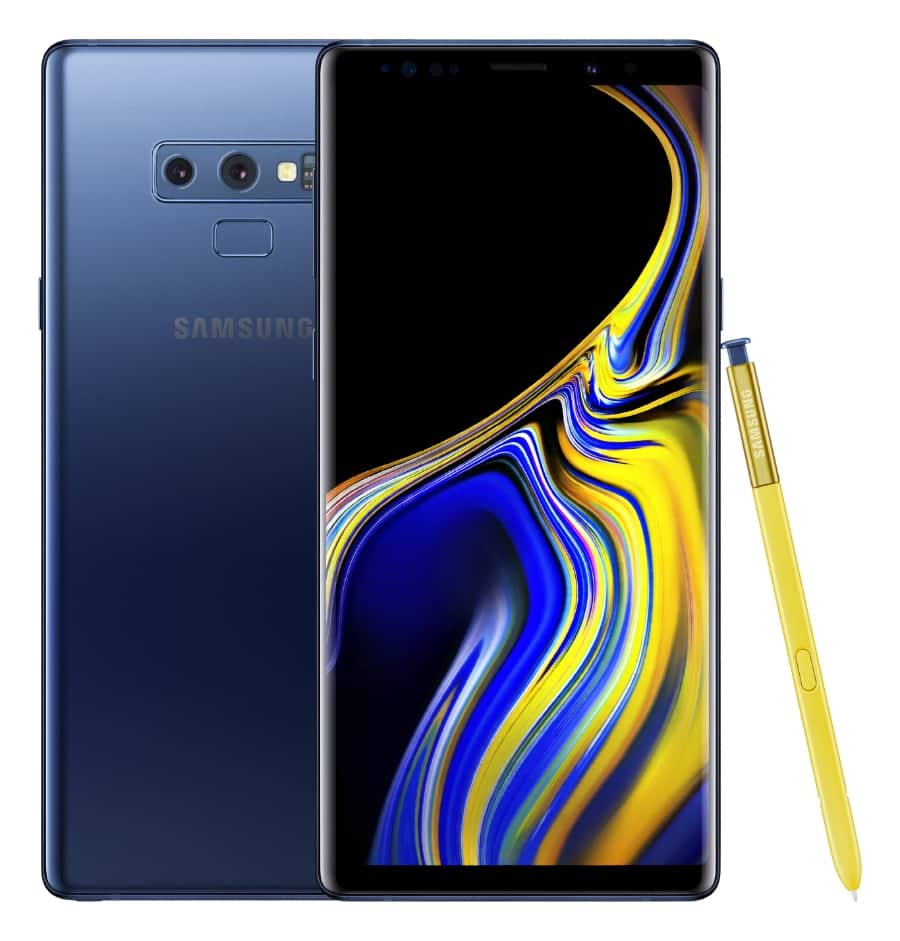
Above: Samsung’s new Note 9. Photos courtesy Samsung.
BitDepth#1158 for August 16, 2018
There’s a moment, near the end of Samsung’s hectic launch of the Note 9 in New York City last week, when DJ Koh, the company’s president and CEO, takes a breath after churning through his enthusiastic wrap up of the announcements.
“We push through barriers to make the Note better every year,” Koh said.
Then he pauses, wipes his brow and with a rueful smile admits, “It’s not easy every year, frankly speaking.”
In just that second, I forgave Koh for his continued struggles with English pronunciation and found myself grateful for what seemed like an honest moment in the mad rush to better, faster and shinier in modern smartphones.
I felt for the dude right then.
“Back when we launched the first Note, a 5.3 inch display sounded huge,” said Drew Blackard, Senior Director of Product Marketing who followed him on stage to talk about the details of the new phone.
“Now, it actually sounds small.”
The new device sports a screen size of 6.4 inches (measured diagonally), the largest Note screen ever. The device juggles its dimensions fractionally to achieve that, remaining essentially the same size.
From its teasers, Samsung made it clear that it was focusing its improvements in its category defining large smartphone on speed, storage space and battery life.
Internal storage takes a jump from a minimum of 64GB to 128GB and there’s a special model that offers 512GB of storage along with an extra 2GB of RAM, for a total of 8GB.
Samsung will release a new 512GB MicroSD card for the device, which gives ambitious users a total of 1TB of storage on their Note 9.
The 10 nanometre octacore processor makes a jump from 2.3GHZ to 2.7, delivering a speed improvement of 33 percent with a 23 percent increase in GPU performance.
Samsung has built a larger heatsink for the processor and Blackard name dropped a “water-carbon cooling system” to manage heat. The innovation may only be maintaining Note 8 levels of heat control by cooling more aggressively (http://ow.ly/XQEU30lnCCy).
The new “all day” battery is a larger power source with the same cell density, up from 3,300 to 4,000mah.
The Note 9 includes the dual-camera; dual-aperture image capture system introduced in the S9 Plus with some software upgrades.
The new Note will be alert for blur and subject blinking and alert the photographer to take another photo immediately. An improved auto exposure mode will enhance tone and colour based on the subject matter the camera sees in the frame.
The SPen, the stylus that’s been the defining feature of the Note series, now has a button that lets users take a picture or advance slides or images on the screen.
The Note 9 also appears to include DEX, the company’s technology for allowing its smartphones to double as full computers when paired with a monitor and keyboard.
DEX was introduced as a disc shaped device and the technology is now built into the smartphone, revealing itself when connected using an USC-C to HDMI connector and Samsung’s DEX app.
It wasn’t all roses at the launch and the struggle to reveal new features sometimes faltered.
The Bixby demo still felt like a lot of me-too features that barely achieve parity in a market with more mature personal digital assistants, and I didn’t know what to make of the demonstration by Ji Soo Yi, VP of AI Strategy, of 160 Note 9 devices filling the hall with AKG designed sound.
It sounded great, but there’s no practical application there.
The Note 9 is available from August 24 at US$999 and $1249. Availability in T&T is yet to be announced, but usually follows in a matter of weeks.




